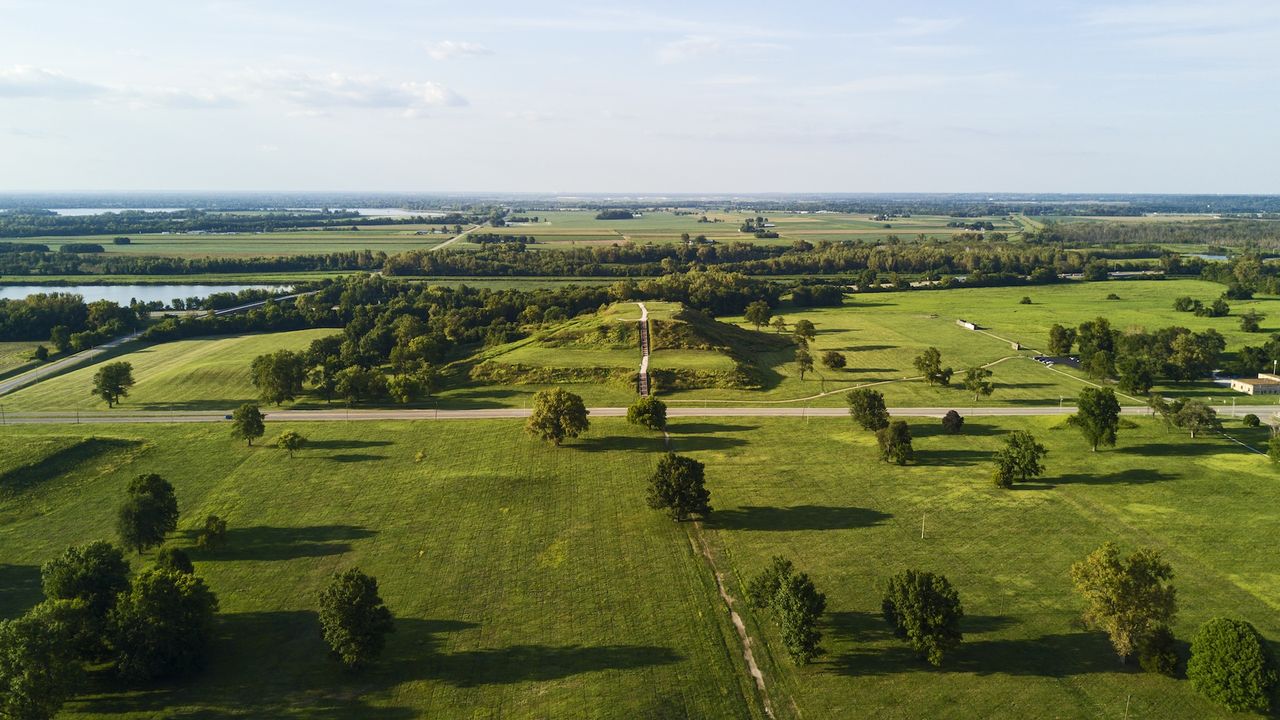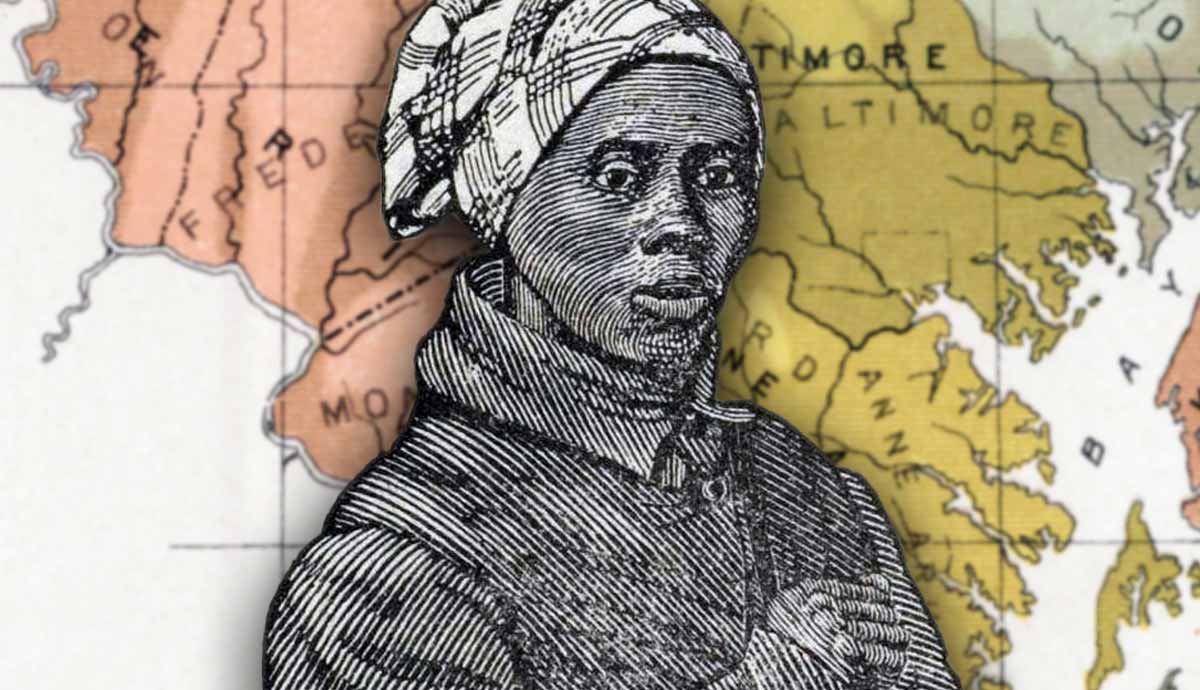0 Kommentare
0 Geteilt
129 Ansichten

Verzeichnis
Elevate your Sngine platform to new levels with plugins from YubNub Digital Media!
-
Bitte loggen Sie sich ein, um liken, teilen und zu kommentieren!
-
This Neighborhood Only Spans 5.71 Square Miles — But Boasts A Star-Studded Culinary SceneThis Neighborhood Only Spans 5.71 Square Miles — But Boasts A Star-Studded Culinary Scene...0 Kommentare 0 Geteilt 678 Ansichten
-
 WWW.LIVESCIENCE.COMIndigenous Americans dragged, carried or floated 5-ton tree more than 100 miles to North America's largest city north of Mexico 900 years agoResearchers have determined the age and origin of a massive tree that was found at the pre-Columbian city of Cahokia in what is now Illinois.0 Kommentare 0 Geteilt 133 Ansichten
WWW.LIVESCIENCE.COMIndigenous Americans dragged, carried or floated 5-ton tree more than 100 miles to North America's largest city north of Mexico 900 years agoResearchers have determined the age and origin of a massive tree that was found at the pre-Columbian city of Cahokia in what is now Illinois.0 Kommentare 0 Geteilt 133 Ansichten -
Town to City's gorgeous twist on Minecraft's blocky aesthetic just became a must-play with new animal-themed updateTown to City's gorgeous twist on Minecraft's blocky aesthetic just became a must-play with new animal-themed update Plenty of studios have adopted the blocky voxel look made popular by Minecraft, but few to such spectacular effect as Galaxy Grove's Town to City. This cozy construction sim landed on Steam just last month and it ranks among the most beautiful city-building games I've ever...0 Kommentare 0 Geteilt 666 Ansichten
-
 WWW.THECOLLECTOR.COMHarriet Tubmans Greatest Achievements (Beyond the Underground Railroad)Harriet Tubman never lost a passenger during her years working tirelessly as a conductor on the Underground Railroad. She brought at least 70 enslaved people to freedom and changed the lives of many enslaved families forever. Due to her success on the Underground Railroad, she was given the task of working as a Union soldier, scout, and spy during the American Civil War. Later, she became an outspoken leader in the womens suffrage movement, uplifting the often overshadowed voices of Black women. Read on to discover more about Harriet Tubmans accomplishments.Harriet Tubmans Life in CaptivityLate 18th century map of Maryland, including Dorchester County, where Tubman lived and worked as an enslaved person, 1906. Source: Johns Hopkins LibrariesHarriet Tubmans life as an enslaved person began when she was born in Maryland in 1822. She was given the name Araminta Ross but later changed it to Harriet Tubman once she married John Tubman in 1844. She was separated from her siblings at an early age, and at the age of six, she was rented out to care for children of nearby overseers.Though she was a child herself, she had to care for infants and was often beaten and blamed when the children cried. She worked various jobs as an enslaved woman in the Antebellum South, including working alongside her father in the timber fields. She preferred working in the timber fields since she could finally spend time with her father after years of separation, and she could work away from the prying eyes of her overseers. She was also able to meet other enslaved people seeking liberation.While running an errand as a teenager, Tubman was struck with a weight in the back of her head, and her skull became fractured. She had witnessed an enslaved man attempting to escape, and when she refused to stop him, the enslaver tried to stop the man by throwing the weight, accidentally hitting Tubman. After the incident, Tubman suffered from seizures, headaches, and issues with sleeping. She had visions of Heaven and freedom as a result of these seizures, believing that God was showing her the way out of captivity.Poster warning Boston-based Black residents of slave catchers following the passing of the Fugitive Slave Act (1850), 1851. Source: National Park Service/Boston Public LibraryIn the fall of 1849, Tubman decided to escape to the North. She feared being sold to another overseer and wanted to finally make her dreams of freedom a reality. Therefore, on one chilly night in September, she followed the stars to Philadelphia. She ran across creeks, marshes, and waterways, her body battered and feet bloodied as she ran for her life.Once she reached Pennsylvania and settled into her new life as a freedwoman, she befriended abolitionists like Frederick Douglass and John Brown and soon found herself working as a conductor on the Underground Railroad. When the Fugitive Slave Act was passed in 1850, a law allowing escaped enslaved people to be deported back to their oppressors in the South, Tubmans work on the Underground Railroad became even more dangerous.She led enslaved people through forests and across rivers and snow as silently as possible, even giving babies opiates to put them to sleep to remain undetected from slave catchers. Despite the danger, she continued to work zealously to free her family and friends over the next ten years.Woman of Action: Harriet Tubmans AccomplishmentsIllustration of Harriet Tubman during her time in the Union Army. Source: American Battlefield TrustBetween 1861 and 1862, Tubman found herself engaged in small speaking events in the northern part of the United States and Canada, speaking out about the violence of slavery, her own escape to freedom, and the Underground Railroad. She was asked by John Andrew, the then Governor of Massachusetts, to take her talents and skills to South Carolina and join the Union Army since the American Civil War had recently begun. Andrew asked Tubman to use the tools she garnered during her time on the Underground Railroad and serve as a scout and spy for the Union Army.Tubman was assigned to Port Royal in the Hilton Head district of South Carolina. The camp was filled with contraband and runaway slaves who had found shelter with the Union Army. At first, she worked as a nurse, caring for the sick, burying the dead, and feeding soldiers. She was forced into domestic work, cooking and cleaning for the troops, and assisted recently emancipated people in finding ways to make a living.At the same time, she started washhouses, where formerly enslaved women did the laundry of Union soldiers for money. She also created a couple of eating houses (eateries) for Union soldiers. Tubman and other formerly enslaved women would forage in forests, looking for wild birds, boars, or anything they could turn into food for the famished men.Illustration depicting the celebration of the 1st South Carolina Colored Infantry receiving regimental colors in Port Royal, South Carolina. Source: The Mariners Museum and ParkAt first, Tubman was paid by the Union Army, but this angered the other formerly enslaved people she worked alongside. Tubman realized the last thing she wanted to do was anger these people because she knew she would eventually start working undercover for the Union Army and would need their support and assistance, especially their knowledge of the land.In light of this, she refused to accept any compensation, whether food or clothing. Instead, she started making root beer, baking pies, and asking formerly enslaved people to sell the pies in the camps. Tubman found a way to make a living for not only herself but also the formerly enslaved people around her, gaining their trust and confidence, which would be useful when she began her work as a spy.Harriet Tubman: Soldier for FreedomA plantation owner oversees enslaved people working on a cotton field in the American South, January 1, 1850. Source: Wikimedia CommonsAs a Union scout and spy, Tubman led an eight-man scouting party across enemy lines to uncover information about Confederate troop movements. The information they obtained in the spring of 1863 proved vital for the local army leadership and led to the capture of Jacksonville, Florida.Around this time, Union commanders had begun planning raids around South Carolinas coastal rivers to remove torpedoes, floating mines resting just below the surface of the water. They also wanted to seize supplies from area plantations and even destroy the plantations. In these raids, they would attempt to free as many enslaved people as possible, especially males, and recruit them to fight for the Union Army.One of these raids, planned by Colonel James Montgomery, occurred along the Combahee River near Beaufort, South Carolina, an area deep in the heart of plantation country where hundreds of slaves were trapped behind Confederate lines and were being held captive on plantations.Moses of Her People: What Did Harriet Tubman Do?Illustration of the 1863 raid along the Combahee River in which hundreds of enslaved people were freed. Source: American Battlefield Trust/Library of Congress, Washington DCBecause of her intelligence network and connections to enslaved and formerly enslaved people, Tubman was able to find out where the underwater, stationary torpedoes had been planted since the Confederate army had used Black labor to bury the mines.On June 2, 1863, Tubman, rifle in hand, alongside Colonel Montgomery, led a raiding party of over 300 men, mostly Black soldiers, up the Combahee River. They burned plantations and liberated the enslaved people being held captive there, managing to avoid Confederate troops and the mines. Around 800 enslaved children, women, and men were liberated. Women ran towards the shores, rice pots still resting atop their heads, and children clung to their mothers.Tubman and the soldiers moved from place to place, port to port, along the riverbank, and helped rescue enslaved people. As they ran to freedom and the boats became full, some hung onto the boats because they didnt want to be left behind. Colonel Montgomery asked Tubman to sing because he knew her reputation as the Moses for her people would calm and reassure them. As she began to sing, the enslaved people released their holds on the boats and prayed that more boats would come their way as the mission continued.In one operation, nearly a thousand enslaved people, with just a small force of Black soldiers on boats guided by Tubman, were freed. Local Union officers commended Tubman, and she became known as the secret weapon for the Combahee River raid. This raid was among her most notable achievements during her service in the Union Army. She was the first woman to lead an American Civil War expedition.Tubman the SuffragistPhotograph of a group of Black and white suffragists in the early 20th century. Source: WTTW/The New York Public LibraryAfter the Civil War, Tubman lived in Auburn, New York, where she tended to crops, raised chickens, sold eggs, and made bricks. She lived a life of poverty, giving away most of her money, and opened the Harriet Tubman Home, a place for elderly, sick, and homeless Black Americans. Tubman took in orphans, people with disabilities, and those who had suffered under slavery and war.She remained a passionate activist, and for decades, she spoke at womens suffrage meetings. In November 1896, Susan B. Anthony, a womens rights activist, led Tubman to the podium at a womens rights convention in Rochester, New York, where she was greeted with thunderous applause and declared that women must stand together in the fight for equality.When the Fifteenth Amendment passed, Black men were given the right to vote. This infuriated many white women. Though many of these women were abolitionists and allies of Tubman, they were furious that Black men were given the right to vote before them.The strategy for many suffragists in the 19th century was to bow to racism. Southern suffragists, in particular, believed white women needed the vote because they could secure a better electorate that would, in turn, prevent Black people from being included on the ballot. Essentially, white women in the South used racist principles to advance their cause for suffrage.Black women became more aggravated and infuriated that the suffragist movement did not address their needs and concerns. However, Tubman saw herself as a champion for both Black and white women. She was able to reach across the color and gender lines and didnt foster the idea that Black women needed a separate movement. Tubman pushed for a suffrage movement that would mend the divisive relationship between Black and white suffragists, and she used inclusive rhetoric in her speeches to support suffrage for all.Harriet Tubmans LegacyHarriet Tubman (far left) and her family. Source: National Park Service/New York Public Library Digital CollectionsTubman died in 1913 at the age of 90 and was buried at Fort Hill Cemetery in Auburn, New York, with military honors. She survived enslavement, became a conductor on the Underground Railroad, worked as a nurse, soldier, spy, and scout during the American Civil War, and was a leading activist in the womens suffrage movement. She inspired countless women and men to stand up against racism and prejudice in their communities and around the world.Today, you can walk or drive in her footsteps on The Harriet Tubman Underground Railroad Byway, a stretch of road that spans 125 miles along Marylands Eastern Shore to Philadelphia, and learn about Tubmans life, the trials she endured, and her strength and courage in the face of adversity.0 Kommentare 0 Geteilt 130 Ansichten
WWW.THECOLLECTOR.COMHarriet Tubmans Greatest Achievements (Beyond the Underground Railroad)Harriet Tubman never lost a passenger during her years working tirelessly as a conductor on the Underground Railroad. She brought at least 70 enslaved people to freedom and changed the lives of many enslaved families forever. Due to her success on the Underground Railroad, she was given the task of working as a Union soldier, scout, and spy during the American Civil War. Later, she became an outspoken leader in the womens suffrage movement, uplifting the often overshadowed voices of Black women. Read on to discover more about Harriet Tubmans accomplishments.Harriet Tubmans Life in CaptivityLate 18th century map of Maryland, including Dorchester County, where Tubman lived and worked as an enslaved person, 1906. Source: Johns Hopkins LibrariesHarriet Tubmans life as an enslaved person began when she was born in Maryland in 1822. She was given the name Araminta Ross but later changed it to Harriet Tubman once she married John Tubman in 1844. She was separated from her siblings at an early age, and at the age of six, she was rented out to care for children of nearby overseers.Though she was a child herself, she had to care for infants and was often beaten and blamed when the children cried. She worked various jobs as an enslaved woman in the Antebellum South, including working alongside her father in the timber fields. She preferred working in the timber fields since she could finally spend time with her father after years of separation, and she could work away from the prying eyes of her overseers. She was also able to meet other enslaved people seeking liberation.While running an errand as a teenager, Tubman was struck with a weight in the back of her head, and her skull became fractured. She had witnessed an enslaved man attempting to escape, and when she refused to stop him, the enslaver tried to stop the man by throwing the weight, accidentally hitting Tubman. After the incident, Tubman suffered from seizures, headaches, and issues with sleeping. She had visions of Heaven and freedom as a result of these seizures, believing that God was showing her the way out of captivity.Poster warning Boston-based Black residents of slave catchers following the passing of the Fugitive Slave Act (1850), 1851. Source: National Park Service/Boston Public LibraryIn the fall of 1849, Tubman decided to escape to the North. She feared being sold to another overseer and wanted to finally make her dreams of freedom a reality. Therefore, on one chilly night in September, she followed the stars to Philadelphia. She ran across creeks, marshes, and waterways, her body battered and feet bloodied as she ran for her life.Once she reached Pennsylvania and settled into her new life as a freedwoman, she befriended abolitionists like Frederick Douglass and John Brown and soon found herself working as a conductor on the Underground Railroad. When the Fugitive Slave Act was passed in 1850, a law allowing escaped enslaved people to be deported back to their oppressors in the South, Tubmans work on the Underground Railroad became even more dangerous.She led enslaved people through forests and across rivers and snow as silently as possible, even giving babies opiates to put them to sleep to remain undetected from slave catchers. Despite the danger, she continued to work zealously to free her family and friends over the next ten years.Woman of Action: Harriet Tubmans AccomplishmentsIllustration of Harriet Tubman during her time in the Union Army. Source: American Battlefield TrustBetween 1861 and 1862, Tubman found herself engaged in small speaking events in the northern part of the United States and Canada, speaking out about the violence of slavery, her own escape to freedom, and the Underground Railroad. She was asked by John Andrew, the then Governor of Massachusetts, to take her talents and skills to South Carolina and join the Union Army since the American Civil War had recently begun. Andrew asked Tubman to use the tools she garnered during her time on the Underground Railroad and serve as a scout and spy for the Union Army.Tubman was assigned to Port Royal in the Hilton Head district of South Carolina. The camp was filled with contraband and runaway slaves who had found shelter with the Union Army. At first, she worked as a nurse, caring for the sick, burying the dead, and feeding soldiers. She was forced into domestic work, cooking and cleaning for the troops, and assisted recently emancipated people in finding ways to make a living.At the same time, she started washhouses, where formerly enslaved women did the laundry of Union soldiers for money. She also created a couple of eating houses (eateries) for Union soldiers. Tubman and other formerly enslaved women would forage in forests, looking for wild birds, boars, or anything they could turn into food for the famished men.Illustration depicting the celebration of the 1st South Carolina Colored Infantry receiving regimental colors in Port Royal, South Carolina. Source: The Mariners Museum and ParkAt first, Tubman was paid by the Union Army, but this angered the other formerly enslaved people she worked alongside. Tubman realized the last thing she wanted to do was anger these people because she knew she would eventually start working undercover for the Union Army and would need their support and assistance, especially their knowledge of the land.In light of this, she refused to accept any compensation, whether food or clothing. Instead, she started making root beer, baking pies, and asking formerly enslaved people to sell the pies in the camps. Tubman found a way to make a living for not only herself but also the formerly enslaved people around her, gaining their trust and confidence, which would be useful when she began her work as a spy.Harriet Tubman: Soldier for FreedomA plantation owner oversees enslaved people working on a cotton field in the American South, January 1, 1850. Source: Wikimedia CommonsAs a Union scout and spy, Tubman led an eight-man scouting party across enemy lines to uncover information about Confederate troop movements. The information they obtained in the spring of 1863 proved vital for the local army leadership and led to the capture of Jacksonville, Florida.Around this time, Union commanders had begun planning raids around South Carolinas coastal rivers to remove torpedoes, floating mines resting just below the surface of the water. They also wanted to seize supplies from area plantations and even destroy the plantations. In these raids, they would attempt to free as many enslaved people as possible, especially males, and recruit them to fight for the Union Army.One of these raids, planned by Colonel James Montgomery, occurred along the Combahee River near Beaufort, South Carolina, an area deep in the heart of plantation country where hundreds of slaves were trapped behind Confederate lines and were being held captive on plantations.Moses of Her People: What Did Harriet Tubman Do?Illustration of the 1863 raid along the Combahee River in which hundreds of enslaved people were freed. Source: American Battlefield Trust/Library of Congress, Washington DCBecause of her intelligence network and connections to enslaved and formerly enslaved people, Tubman was able to find out where the underwater, stationary torpedoes had been planted since the Confederate army had used Black labor to bury the mines.On June 2, 1863, Tubman, rifle in hand, alongside Colonel Montgomery, led a raiding party of over 300 men, mostly Black soldiers, up the Combahee River. They burned plantations and liberated the enslaved people being held captive there, managing to avoid Confederate troops and the mines. Around 800 enslaved children, women, and men were liberated. Women ran towards the shores, rice pots still resting atop their heads, and children clung to their mothers.Tubman and the soldiers moved from place to place, port to port, along the riverbank, and helped rescue enslaved people. As they ran to freedom and the boats became full, some hung onto the boats because they didnt want to be left behind. Colonel Montgomery asked Tubman to sing because he knew her reputation as the Moses for her people would calm and reassure them. As she began to sing, the enslaved people released their holds on the boats and prayed that more boats would come their way as the mission continued.In one operation, nearly a thousand enslaved people, with just a small force of Black soldiers on boats guided by Tubman, were freed. Local Union officers commended Tubman, and she became known as the secret weapon for the Combahee River raid. This raid was among her most notable achievements during her service in the Union Army. She was the first woman to lead an American Civil War expedition.Tubman the SuffragistPhotograph of a group of Black and white suffragists in the early 20th century. Source: WTTW/The New York Public LibraryAfter the Civil War, Tubman lived in Auburn, New York, where she tended to crops, raised chickens, sold eggs, and made bricks. She lived a life of poverty, giving away most of her money, and opened the Harriet Tubman Home, a place for elderly, sick, and homeless Black Americans. Tubman took in orphans, people with disabilities, and those who had suffered under slavery and war.She remained a passionate activist, and for decades, she spoke at womens suffrage meetings. In November 1896, Susan B. Anthony, a womens rights activist, led Tubman to the podium at a womens rights convention in Rochester, New York, where she was greeted with thunderous applause and declared that women must stand together in the fight for equality.When the Fifteenth Amendment passed, Black men were given the right to vote. This infuriated many white women. Though many of these women were abolitionists and allies of Tubman, they were furious that Black men were given the right to vote before them.The strategy for many suffragists in the 19th century was to bow to racism. Southern suffragists, in particular, believed white women needed the vote because they could secure a better electorate that would, in turn, prevent Black people from being included on the ballot. Essentially, white women in the South used racist principles to advance their cause for suffrage.Black women became more aggravated and infuriated that the suffragist movement did not address their needs and concerns. However, Tubman saw herself as a champion for both Black and white women. She was able to reach across the color and gender lines and didnt foster the idea that Black women needed a separate movement. Tubman pushed for a suffrage movement that would mend the divisive relationship between Black and white suffragists, and she used inclusive rhetoric in her speeches to support suffrage for all.Harriet Tubmans LegacyHarriet Tubman (far left) and her family. Source: National Park Service/New York Public Library Digital CollectionsTubman died in 1913 at the age of 90 and was buried at Fort Hill Cemetery in Auburn, New York, with military honors. She survived enslavement, became a conductor on the Underground Railroad, worked as a nurse, soldier, spy, and scout during the American Civil War, and was a leading activist in the womens suffrage movement. She inspired countless women and men to stand up against racism and prejudice in their communities and around the world.Today, you can walk or drive in her footsteps on The Harriet Tubman Underground Railroad Byway, a stretch of road that spans 125 miles along Marylands Eastern Shore to Philadelphia, and learn about Tubmans life, the trials she endured, and her strength and courage in the face of adversity.0 Kommentare 0 Geteilt 130 Ansichten -
 WWW.PCGAMESN.COMTown to City's gorgeous twist on Minecraft's blocky aesthetic just became a must-play with new animal-themed updatePlenty of studios have adopted the blocky voxel look made popular by Minecraft, but few to such spectacular effect as Galaxy Groves Town to City. This cozy construction sim landed on Steam just last month and it ranks among the most beautiful city-building games Ive ever seen. Set in the 19th-Century Mediterranean, it reminds me a little of Anno if the world and everything in it was made from cubes. Its developer has just unveiled the first major update, which lands for free in November, and now Im even more sold.Read the full story on PCGamesN: Town to City's gorgeous twist on Minecraft's blocky aesthetic just became a must-play with new animal-themed update0 Kommentare 0 Geteilt 189 Ansichten
WWW.PCGAMESN.COMTown to City's gorgeous twist on Minecraft's blocky aesthetic just became a must-play with new animal-themed updatePlenty of studios have adopted the blocky voxel look made popular by Minecraft, but few to such spectacular effect as Galaxy Groves Town to City. This cozy construction sim landed on Steam just last month and it ranks among the most beautiful city-building games Ive ever seen. Set in the 19th-Century Mediterranean, it reminds me a little of Anno if the world and everything in it was made from cubes. Its developer has just unveiled the first major update, which lands for free in November, and now Im even more sold.Read the full story on PCGamesN: Town to City's gorgeous twist on Minecraft's blocky aesthetic just became a must-play with new animal-themed update0 Kommentare 0 Geteilt 189 Ansichten -
 WWW.MASHED.COMThis Neighborhood Only Spans 5.71 Square Miles But Boasts A Star-Studded Culinary SceneCalifornia is home to several bustling and diverse food scenes, but this small neighborhood boasts an impressive array of lavish restaurants.0 Kommentare 0 Geteilt 130 Ansichten
WWW.MASHED.COMThis Neighborhood Only Spans 5.71 Square Miles But Boasts A Star-Studded Culinary SceneCalifornia is home to several bustling and diverse food scenes, but this small neighborhood boasts an impressive array of lavish restaurants.0 Kommentare 0 Geteilt 130 Ansichten -
WWW.THEKITCHN.COM3 Kitchen Cabinet Colors Designers Would Never Choose for Their Own HomePlus, the colors their cabinets are now. READ MORE...0 Kommentare 0 Geteilt 129 Ansichten
-
-
 YUBNUB.NEWSDeath Threats Against GOP Kids IGNOREDDemocratic gubernatorial candidate Abigail Spanberger refuses to condemn her attorney general running mate who sent shocking text messages wishing death on a Republican lawmakers children, instead0 Kommentare 0 Geteilt 126 Ansichten
YUBNUB.NEWSDeath Threats Against GOP Kids IGNOREDDemocratic gubernatorial candidate Abigail Spanberger refuses to condemn her attorney general running mate who sent shocking text messages wishing death on a Republican lawmakers children, instead0 Kommentare 0 Geteilt 126 Ansichten





